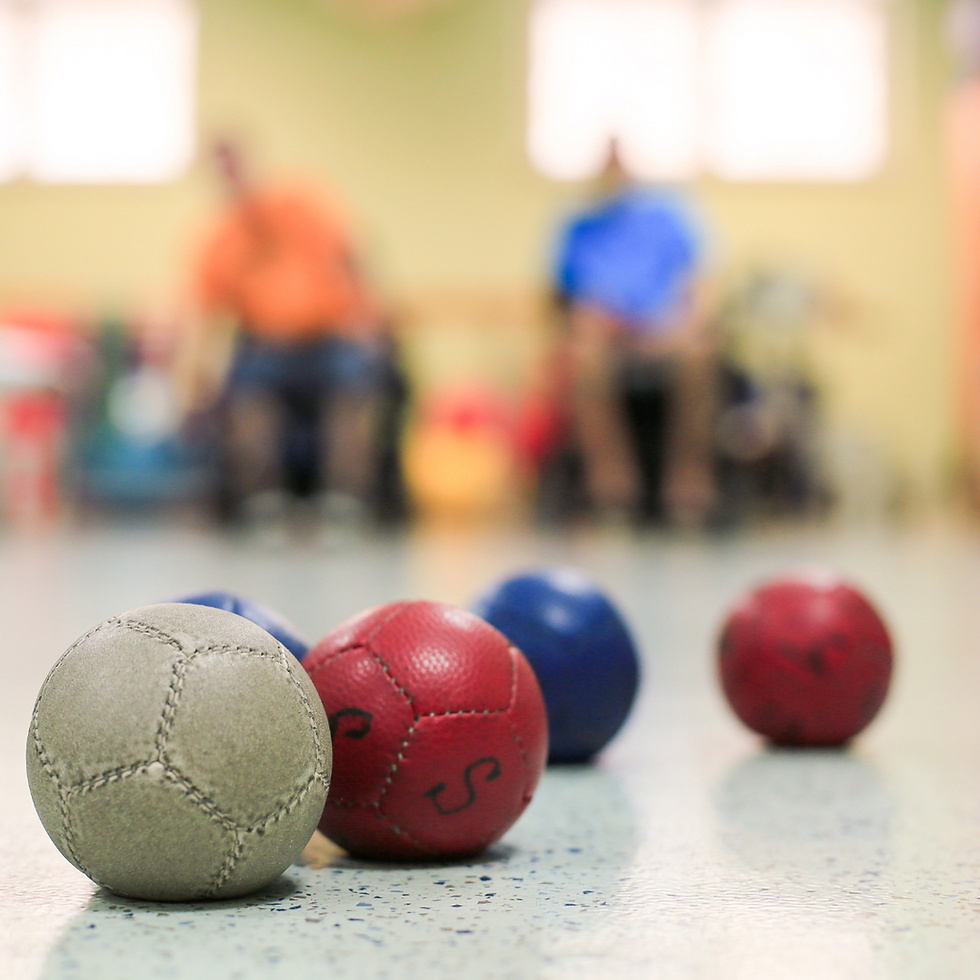Discovering Rebound Therapy
- Wingate

- Nov 11
- 4 min read
Rebound therapy is a great way to support physical and emotional well-being. It provides a fun, gentle and effective form of exercise that can benefit many individuals, especially those with special educational needs and disabilities. At The Wingate Centre we have seen how this therapy can boost self-confidence, improve coordination and promote overall health. Let me guide you through what rebound therapy is, how it works, and why it can be a valuable addition to your support resources.
What is Rebound Therapy?
Rebound therapy uses gentle bouncing motions on a trampoline to stimulate the body and mind. It is a therapeutic activity designed to improve balance, muscle tone and motor skills. Therapy is often tailored to individual needs, making it accessible and enjoyable for people of all ages and abilities.
The trampoline used in rebound therapy is usually smaller and more stable than a typical garden trampoline. This ensures security and control during the session. The therapist or trainer guides the participant through specific activities and exercises, encouraging gentle bouncing, stretching and coordination work.
This therapy not only provides physical exercise, but it also helps with sensory integration, emotional regulation, and social interaction. The rhythmic motion of bouncing can be calming and uplifting, making it easier for individuals to engage and participate.

Rebound therapy offers a variety of benefits. Here are some of the key benefits that make it a valuable tool to support individuals with SEND:
Improves balance and coordination: The bouncing motion challenges the body to maintain stability, which strengthens core muscles and increases motor control.
Promotes cardiovascular health: Even light jumping increases the heart rate, promoting better circulation and stamina.
Increases muscle tone and strength: Frequent walking helps build muscle strength without putting pressure on the joints.
Supports sensory processing: Vestibular stimulation from bouncing helps the brain process sensory information more effectively.
Encourages social interaction: Group sessions or one-on-one therapy can improve communication skills and build self-confidence.
Promotes emotional well-being: The fun and rhythmic nature of bouncing can reduce anxiety and improve mood.
Using rebound therapy can be a game-changer for many people. They provide a safe and supportive environment where individuals can explore movement and develop new skills.
Is Rebound Good for You?
Absolutely. Rebound therapy is beneficial for people of all ages and abilities. It is a low-impact exercise that reduces stress on the joints while providing a full-body workout. For individuals with SEND, it offers a unique combination of physical and sensory benefits.
Rebound therapy helps improve lymphatic circulation, which supports the immune system and helps detoxify the body. It also enhances proprioception – the sense of body position and movement – which is often a challenge for people with coordination difficulties.
Additionally, the repeated bouncing motions can be very relaxing. It helps regulate the nervous system, making work easier for humans.

How to Get Started with Rebound Therapy
Starting rebound therapy is easier than you might think. Here are some practical steps to help you begin:
Find the right equipment: Choose a trampoline designed for therapy, with safety features like handles and a sturdy frame.
Work with a trained therapist: A professional can assess individual needs and create a personalised plan.
Create a safe environment: Ensure the space is free from hazards and has enough room for movement.
Start slow: Begin with gentle bouncing and simple exercises to build confidence and comfort.
Set clear goals: Focus on specific outcomes like improving balance, strength, or sensory processing.
Monitor progress: Keep track of improvements and adjust the therapy as needed.
Encourage regular sessions: Consistency is key to seeing benefits over time.
Remember, rebound therapy is about enjoyment as much as it is about exercise. Celebrate small achievements and keep the atmosphere positive and supportive.
Making the Most of Rebound Therapy
Starting rebound therapy is easier than you might think. Here are some practical steps to help you get started:
Find the right equipment: Choose a trampoline designed for therapy, with safety features like handles and a sturdy frame.
Work with a trained therapist: A professional can assess individual needs and create a personalized plan.
Create a safe environment: Make sure the space is free from hazards and has enough room for movement.
Start slow: Start with light jumping and simple exercises to build confidence and comfort.
Set clear goals: Focus on specific outcomes like improving balance, strength or sensory processing.
Monitor progress: Keep track of improvements and adjust therapy as needed.
Encourage regular sessions: Consistency is key to seeing benefits over time.
Remember, rebound therapy is as much about fun as it is about exercise. Celebrate small achievements and keep the atmosphere positive and supportive.

Rebound therapy opens up a world of possibilities. It is a gentle, effective and inclusive way to support health and well-being. Whether you are a school, family or group supporting individuals with SEND, this therapy can be a valuable addition to your care and support options. Embrace the bounce and watch the positive changes unfold.








